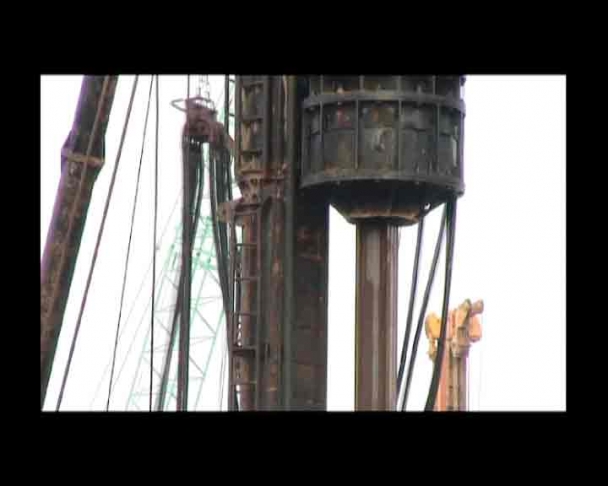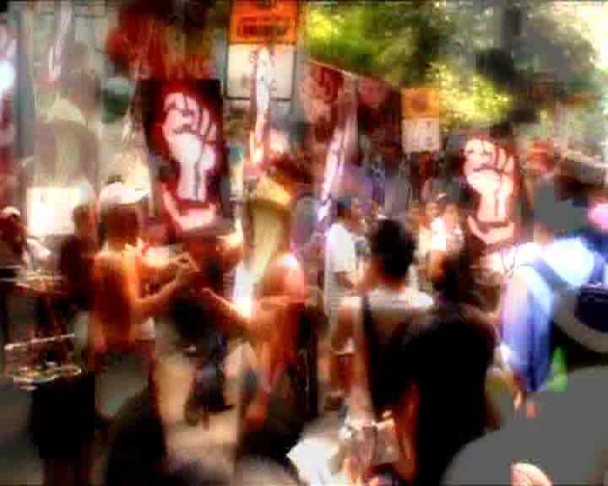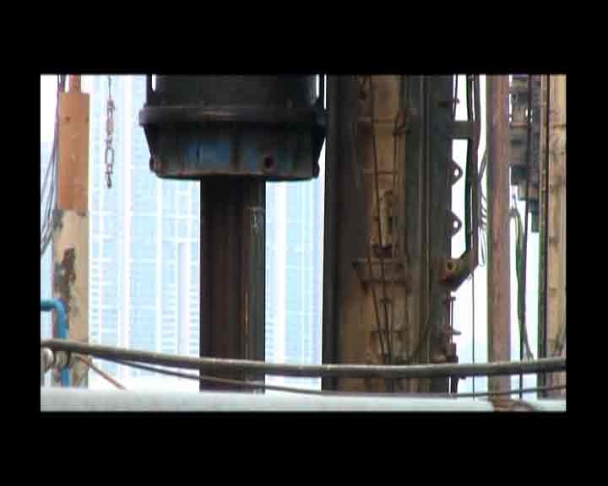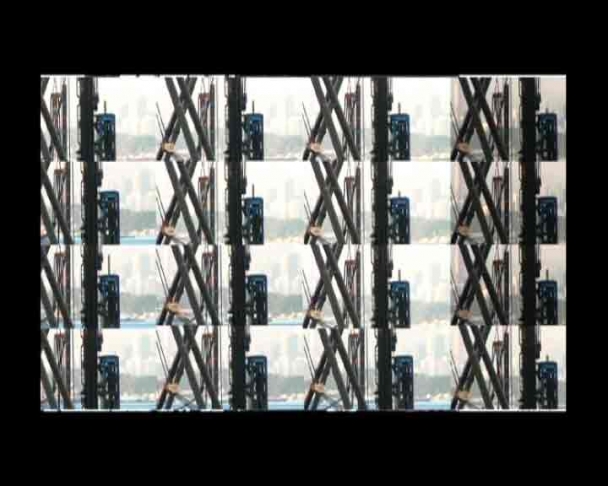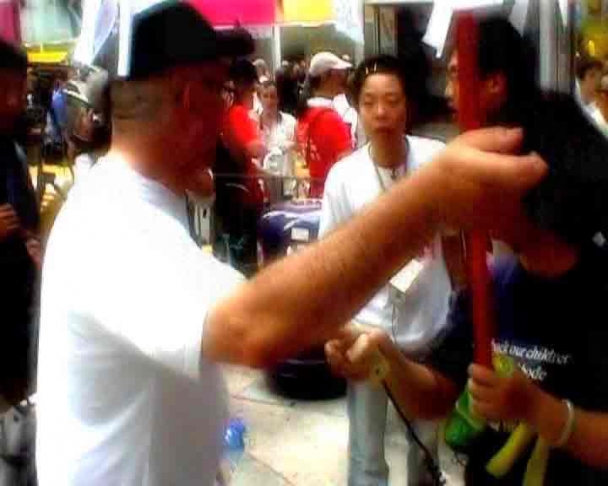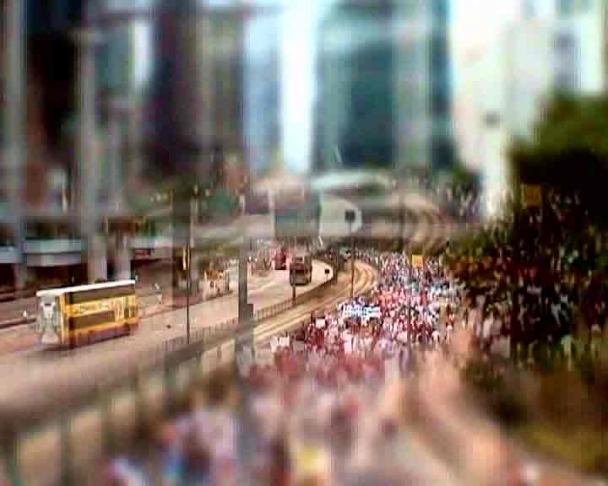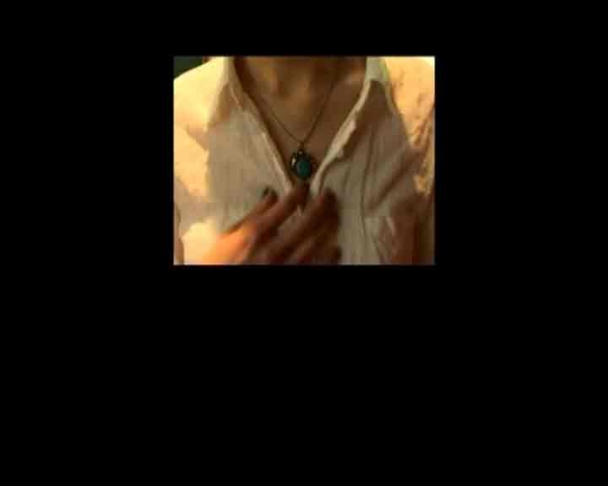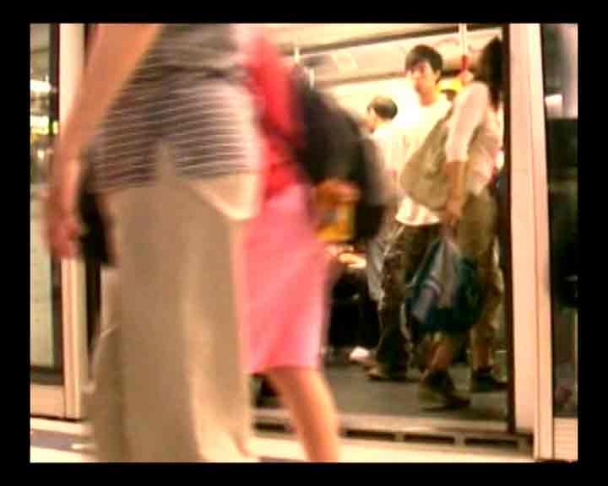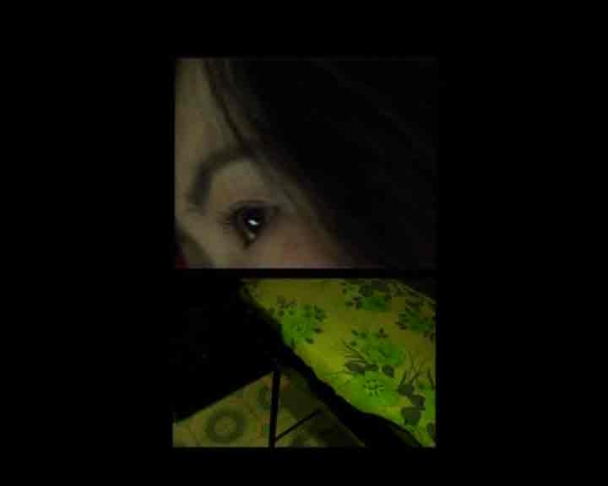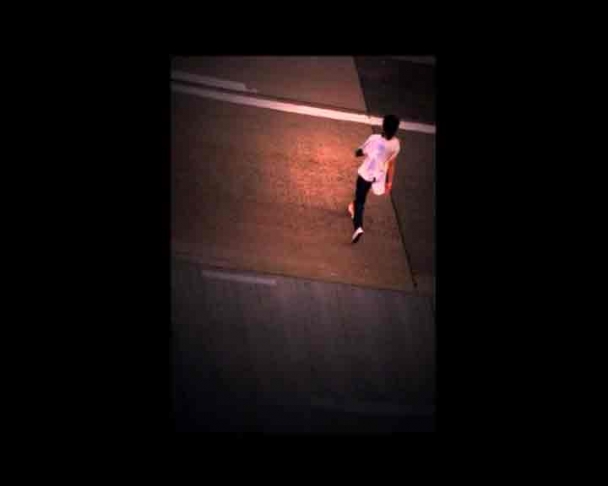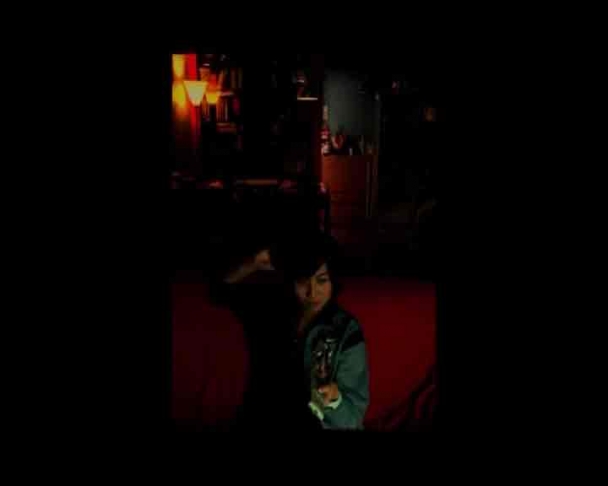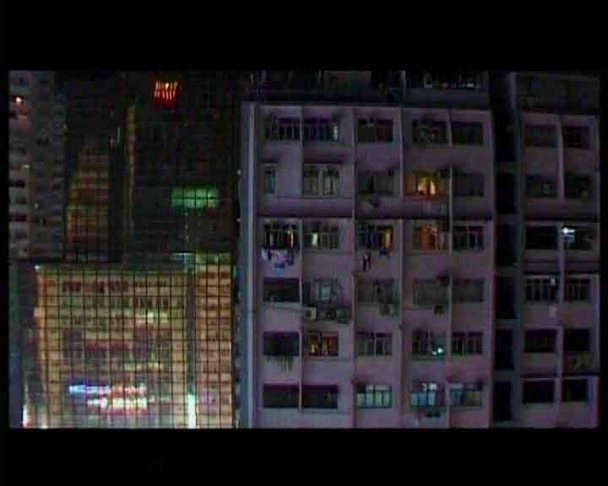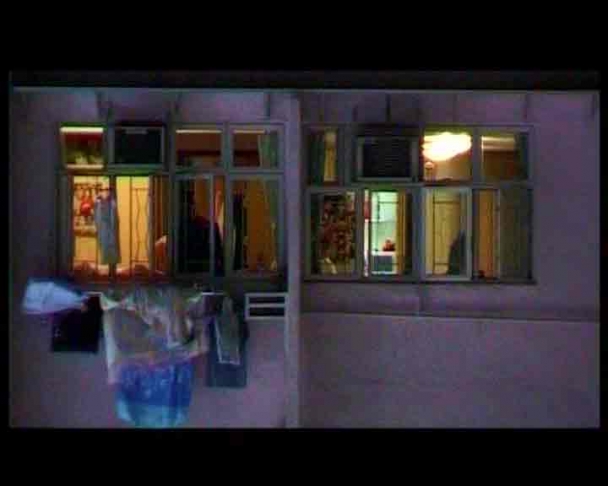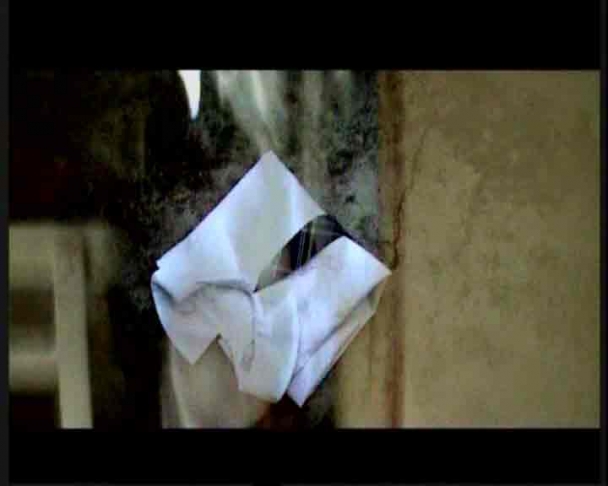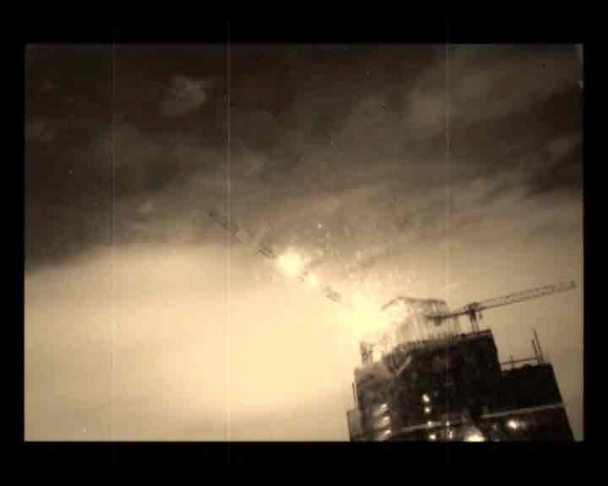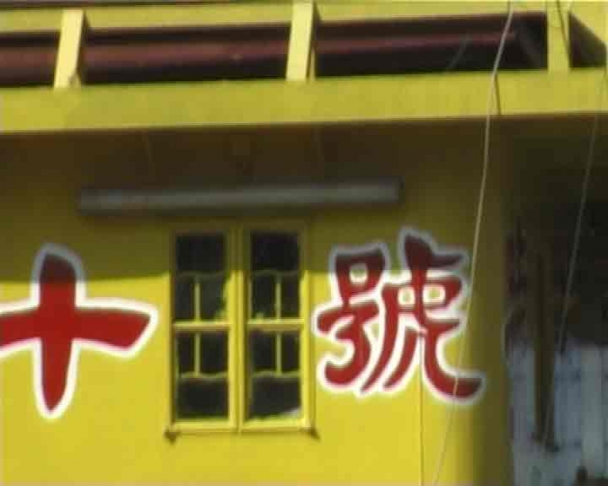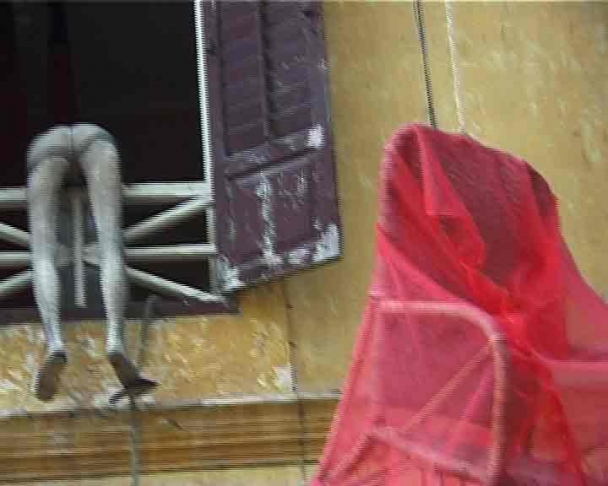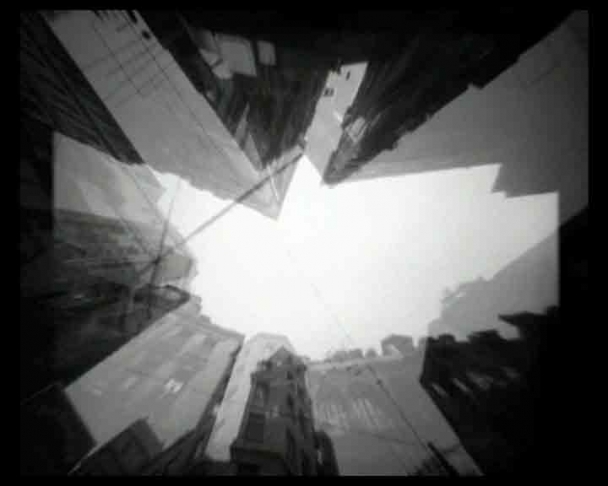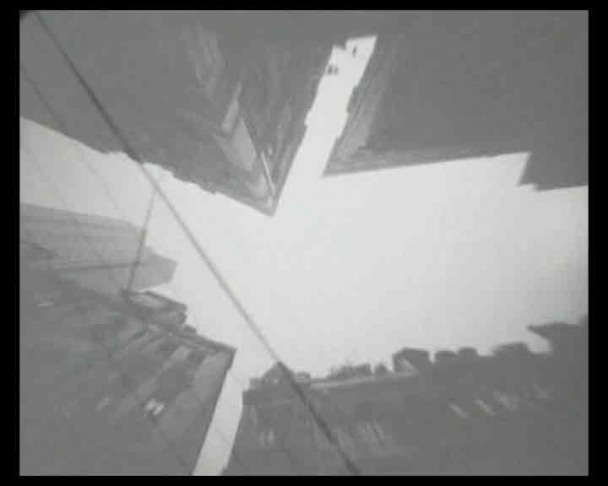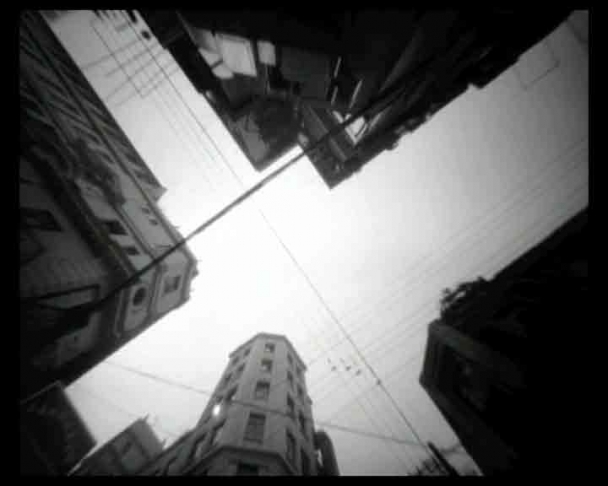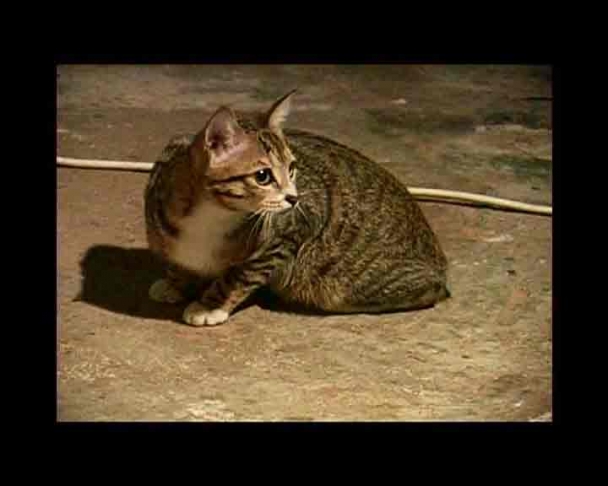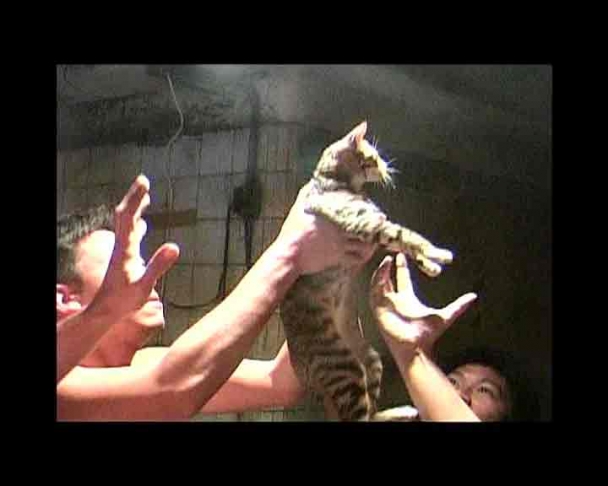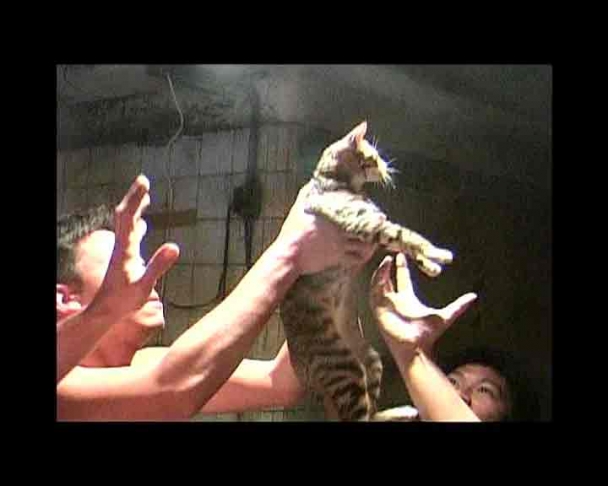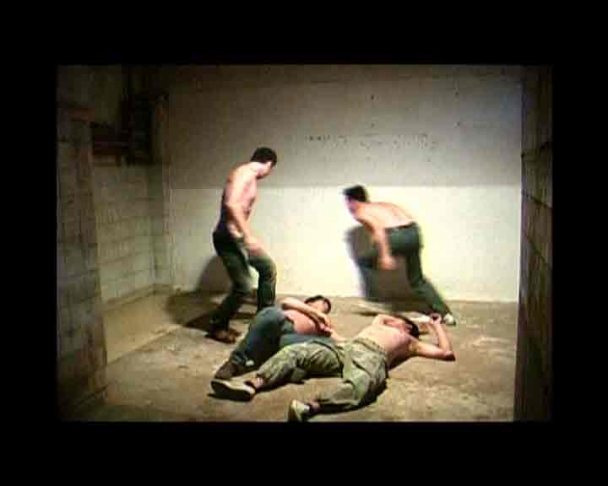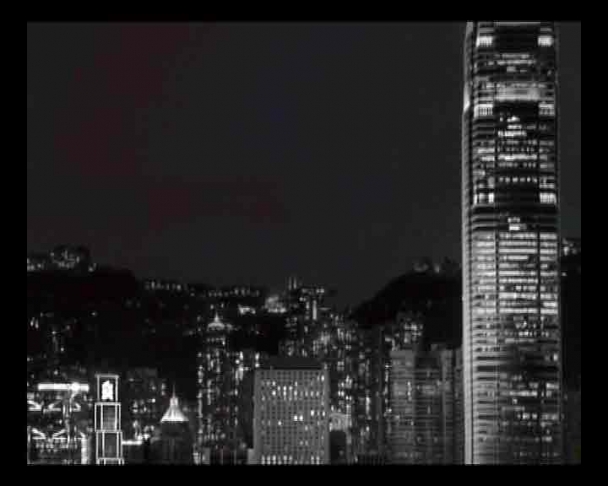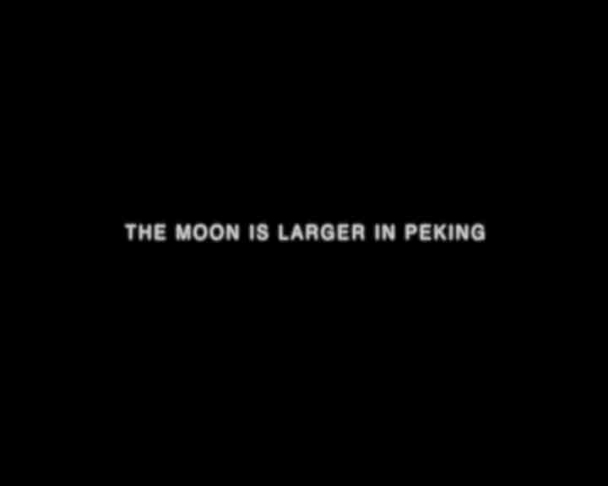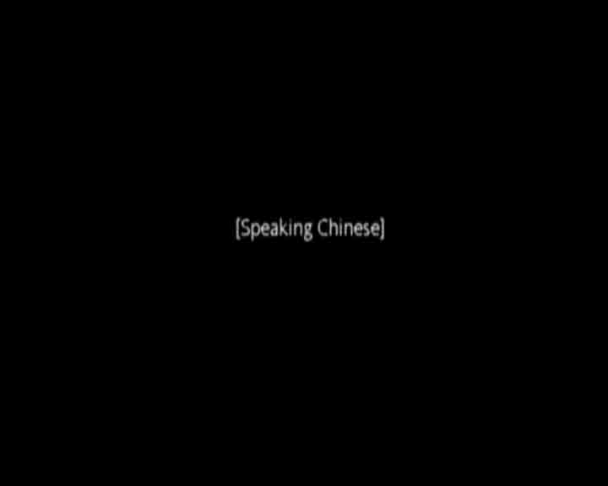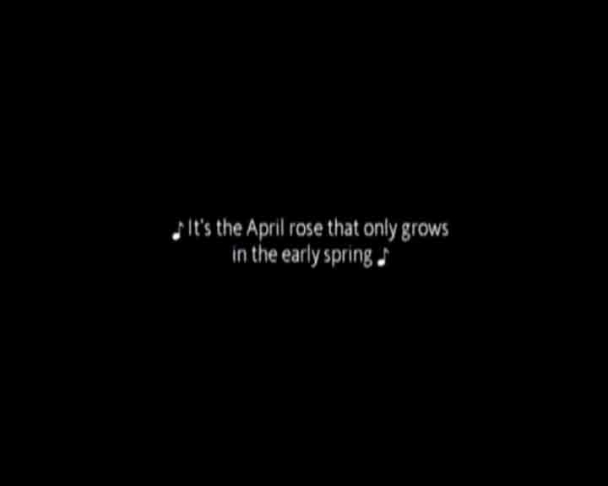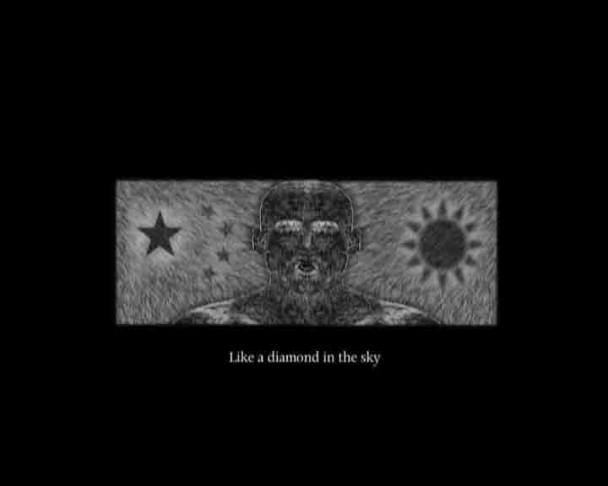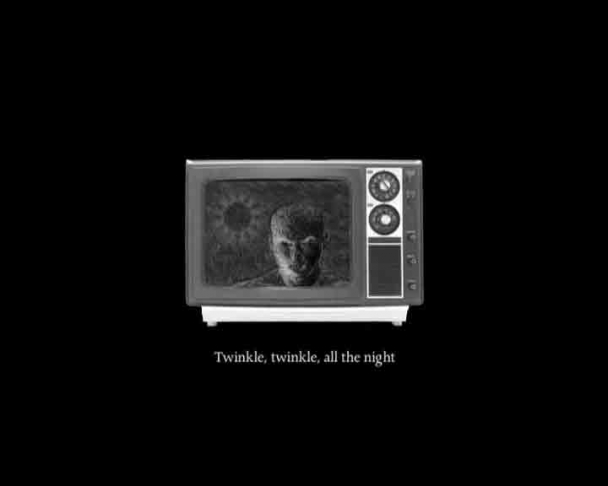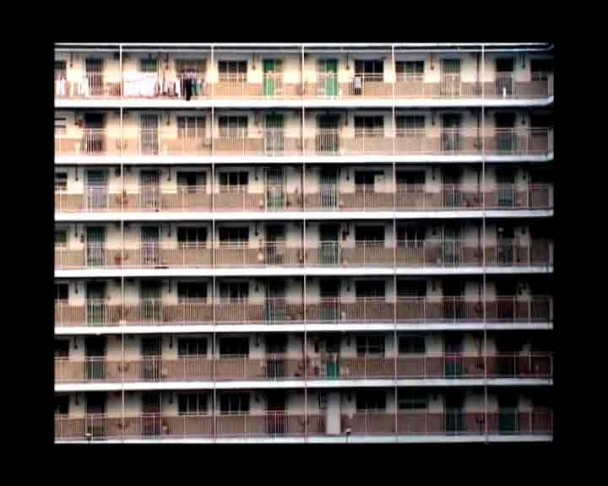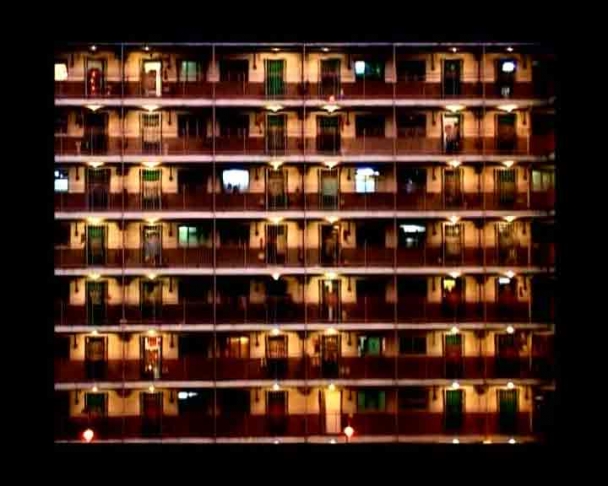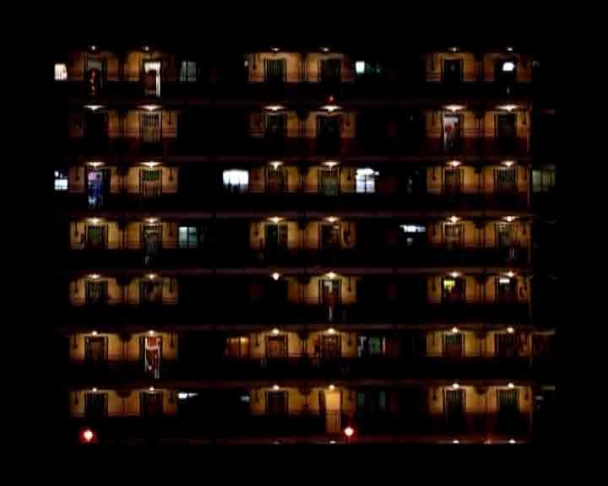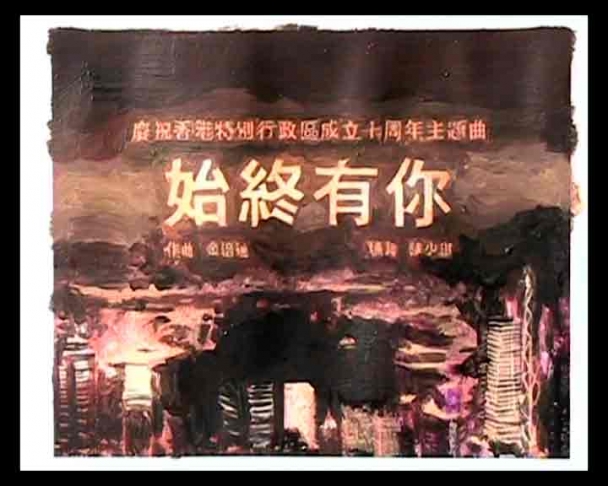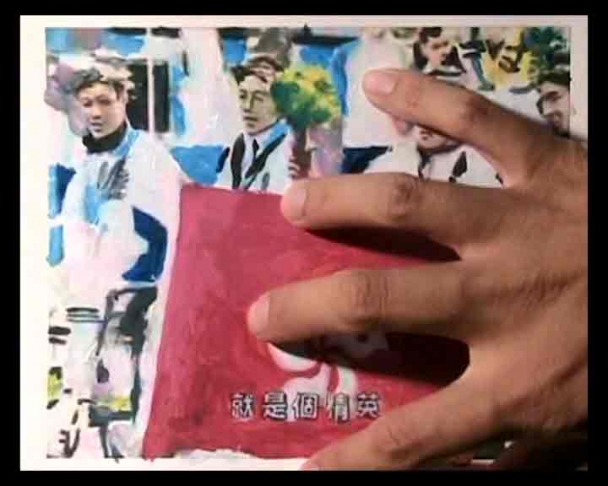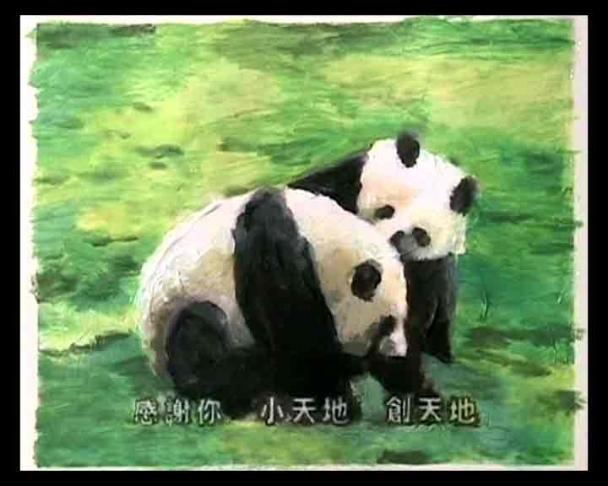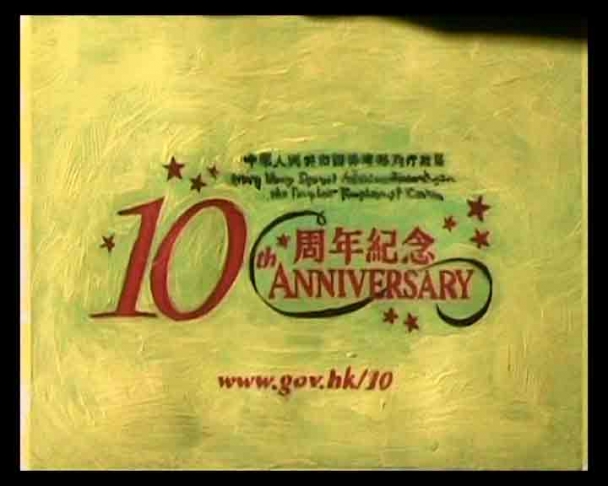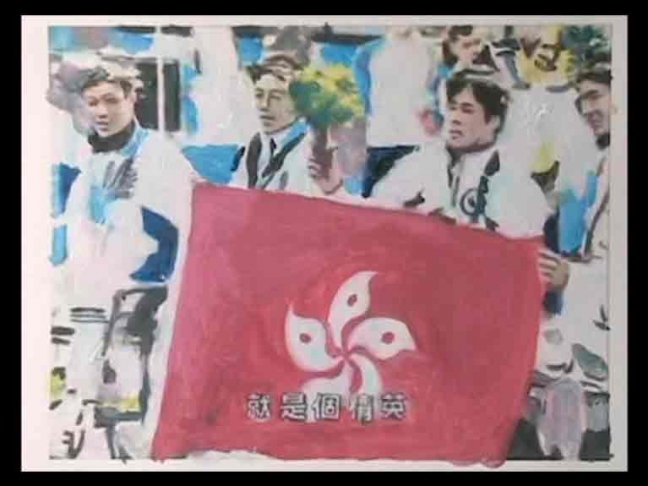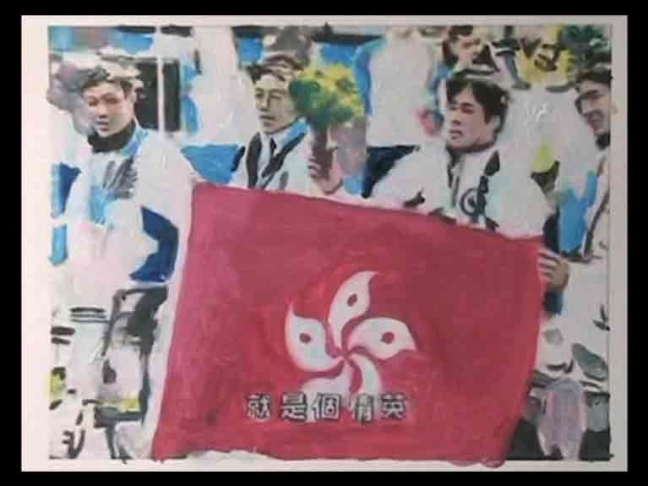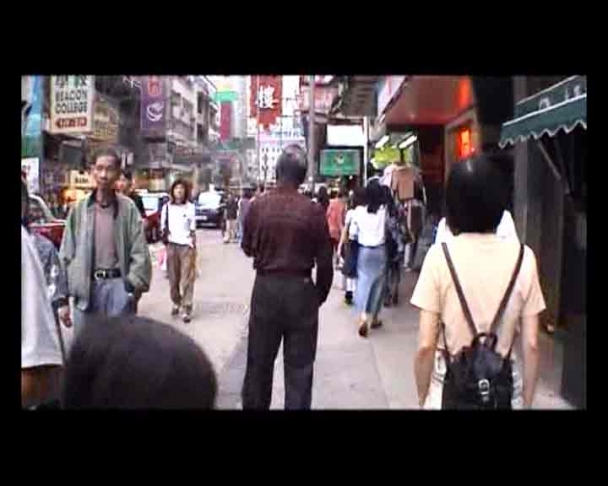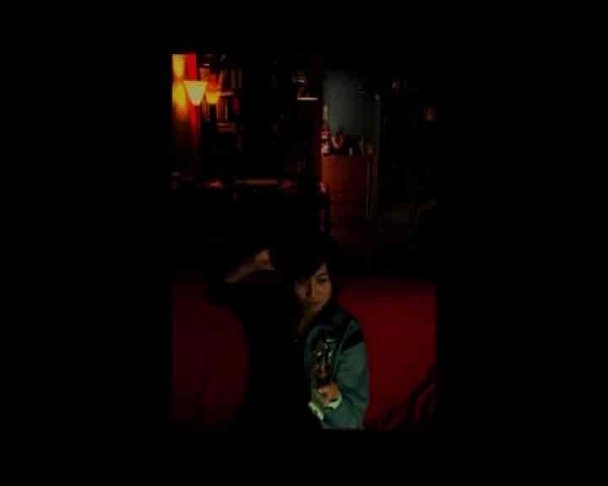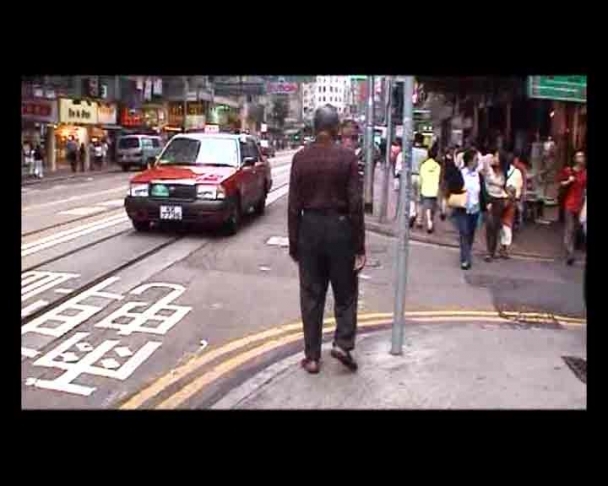This Is Hong Kong
2010.01.15~2010.03.28
09:00 - 17:00
This Is Hong Kong presents a selection of artists from Hong Kong that reflect on the idea of politics, history, architecture, postcolonial issues and daily life in this territory. The moving image has been one of the areas favored with an intense research in the creative practice of the Hong Kong art scene, and mark a stark difference with that of mainland China, reflecting on differences in cultural background and academic training. This Is Hong Kong presents a unique visual picture of what is Hong Kong now, through an analysis from video media, providing a fresh snapshot of development of the territory after postcolonial devolution in 1997. The exhibition is divided under four general themes: (TRANSITIONAL) ARCHITECTURES, DIARIES, FICTIONS and TACTICAL POSITIONS. Each section deals with a different side of the city, and represents the different strategies developed by the artists. Participating artists: Howard Cheng Chi Lai / Chow Chun Fai / S.T. Choi Sai Ho / Silas Fong / Hung Keung /Ip Yuk-Yiu / Linda Lai / Leung Chi Wo / Leung Mee Ping / MAP Office / Kingsley Ng / Adrian Wong / Kacey Wong / Woo Ling Ling / Ban Zhang Venue: Kuandu Museum of Fine Arts / 102 Gallery
This Is Hong Kong presents a selection of artists from Hong Kong that reflect on the idea of politics, history, architecture, postcolonial issues and daily life in this territory. The moving image has been one of the areas favored with an intense research in the creative practice of the Hong Kong art scene, and mark a stark difference with that of mainland China, reflecting on differences in cultural background and academic training. This Is Hong Kong presents a unique visual picture of what is Hong Kong now, through an analysis from video media, providing a fresh snapshot of development of the territory after postcolonial devolution in 1997. The exhibition is divided under four general themes: (TRANSITIONAL) ARCHITECTURES, DIARIES, FICTIONS and TACTICAL POSITIONS. Each section deals with a different side of the city, and represents the different strategies developed by the artists. Participating artists: Howard Cheng Chi Lai / Chow Chun Fai / S.T. Choi Sai Ho / Silas Fong / Hung Keung /Ip Yuk-Yiu / Linda Lai / Leung Chi Wo / Leung Mee Ping / MAP Office / Kingsley Ng / Adrian Wong / Kacey Wong / Woo Ling Ling / Ban Zhang Venue: Kuandu Museum of Fine Arts / 102 Gallery
Chow Chun Fai was born in Hong Kong in 1980. Chow is fond of street scenes and interiors with few recognizable signs. The absence of contextual information gives the viewer a timeless picture much like a snap shot or a scene in a movie. He holds a Master of Fine Arts candidate at the Fine Arts Department of Chinese University of Hong Kong. Chow Chun Fai has been selected finalist for the Sovereign Asian Art Prize in 2004, 2005, 2006 and prize winner for 2008. He has also twice been a finalist in the Philippe Charriol Foundation’s annual art competition. Chow is currently an active member of Fotan Art Village and has exhibited his work extensively in both solo and group exhibitions in Hong Kong, Beijing, Shanghai, Manchester, Munich, Salzburg and Vienna.
Chow Chun Fai was born in Hong Kong in 1980. Chow is fond of street scenes and interiors with few recognizable signs. The absence of contextual information gives the viewer a timeless picture much like a snap shot or a scene in a movie. He holds a Master of Fine Arts candidate at the Fine Arts Department of Chinese University of Hong Kong. Chow Chun Fai has been selected finalist for the Sovereign Asian Art Prize in 2004, 2005, 2006 and prize winner for 2008. He has also twice been a finalist in the Philippe Charriol Foundation’s annual art competition. Chow is currently an active member of Fotan Art Village and has exhibited his work extensively in both solo and group exhibitions in Hong Kong, Beijing, Shanghai, Manchester, Munich, Salzburg and Vienna.
Howard Cheng Chi Lai was born in 1986 Hong Kong. In 2008, the video work in this program was selected for public screening in the 32nd Hong Kong International Film Festival. His work digitally reconstructed of a traditional Hong Kong dwelling creates a rhythm that engages with the notion music and the kinetic.
Howard Cheng Chi Lai was born in 1986 Hong Kong. In 2008, the video work in this program was selected for public screening in the 32nd Hong Kong International Film Festival. His work digitally reconstructed of a traditional Hong Kong dwelling creates a rhythm that engages with the notion music and the kinetic.
Ban Zhang a.k.a CHEONG CHI PING was born in 1962 in Hong Kong. He lives and works in Hong Kong and Taiwan. He has exhibited in 2009 CyberPort Easter Butterfly Sculpture Project, 2009 Cattle101@artist village, 2008 The Hong Kong Racing Museum, 2008 Hong Kong Sculpture Biennial Exhibition.
Ban Zhang a.k.a CHEONG CHI PING was born in 1962 in Hong Kong. He lives and works in Hong Kong and Taiwan. He has exhibited in 2009 CyberPort Easter Butterfly Sculpture Project, 2009 Cattle101@artist village, 2008 The Hong Kong Racing Museum, 2008 Hong Kong Sculpture Biennial Exhibition.
Ip Yuk-Yiu is an experimental filmmaker, media artist and independent curator working primarily with time-based and audiovisual media. His works have been shown extensively in international festivals such as the Image Festival, Transmediale, CinemaTexas, Ann Arbor Film Festival, European Media Art Festival, Viper Festival, New York Film Festival, Yamagato International Documentary Film Festival and more. His recent works explore performative and computational forms of cinema. Currently he is an Assistant Professor at the School of Creative Media, City University of Hong Kong.
Ip Yuk-Yiu is an experimental filmmaker, media artist and independent curator working primarily with time-based and audiovisual media. His works have been shown extensively in international festivals such as the Image Festival, Transmediale, CinemaTexas, Ann Arbor Film Festival, European Media Art Festival, Viper Festival, New York Film Festival, Yamagato International Documentary Film Festival and more. His recent works explore performative and computational forms of cinema. Currently he is an Assistant Professor at the School of Creative Media, City University of Hong Kong.
Kingsley Ng is a new media artist based in Hong Kong. He has been highly recognized for his works and received many awards such as the HKDC DesignSmart Young Design Talent Award 2008 and a Gold Medal for the Interactive Media category of IFVA 2007 in Hong Kong. His work is usually site-specific inspired upon initial conception, his installations have been featured internationally, such as the IRCAM - Centre Pompidou in France and Fabrica Research Centre in Italy.
Kingsley Ng is a new media artist based in Hong Kong. He has been highly recognized for his works and received many awards such as the HKDC DesignSmart Young Design Talent Award 2008 and a Gold Medal for the Interactive Media category of IFVA 2007 in Hong Kong. His work is usually site-specific inspired upon initial conception, his installations have been featured internationally, such as the IRCAM - Centre Pompidou in France and Fabrica Research Centre in Italy.
Adrian Wong was born and raised in Chicago, Illinois, USA in 1980, he is now based in Hong Kong and L.A.. Originally trained in research psychology, Adrian Wong began making and exhibiting work in San Francisco while concurrently conducting experiments on young children. He typically incorporates elements of sculpture, installation, video and performance. Based on a research intensive methodology, his current projects explore issues related to cultural and political developments in the Pearl River Delta as well as the artist's own estranged familial ties to the region. Recent exhibitions include “Reversing Horizons” at Shanghai MOCA, “Dis Play” at Para/Site Art Space, the Hong Kong Sculpture Biennial, and the traveling exhibition, “Where the Lions Are.”
Adrian Wong was born and raised in Chicago, Illinois, USA in 1980, he is now based in Hong Kong and L.A.. Originally trained in research psychology, Adrian Wong began making and exhibiting work in San Francisco while concurrently conducting experiments on young children. He typically incorporates elements of sculpture, installation, video and performance. Based on a research intensive methodology, his current projects explore issues related to cultural and political developments in the Pearl River Delta as well as the artist's own estranged familial ties to the region. Recent exhibitions include “Reversing Horizons” at Shanghai MOCA, “Dis Play” at Para/Site Art Space, the Hong Kong Sculpture Biennial, and the traveling exhibition, “Where the Lions Are.”
Leung Chi Wo was born in Hong Kong in 1968. After completing his master's degree in Hong Kong, Leung went to Italy to study photography, and co-founded Para/Site Art Space with his friends back in Hong Kong. Leung has participated in residency programs in New York, Japan, and Australia, and exhibited at Hangzhou Triennale, Shanghai Biennale as well as numerous group shows around the world. Chi Wo Leung uses various media to explore the urban and private space, dealing with the idea of the site specific in a contextual manner as well as through visual associations.
Leung Chi Wo was born in Hong Kong in 1968. After completing his master's degree in Hong Kong, Leung went to Italy to study photography, and co-founded Para/Site Art Space with his friends back in Hong Kong. Leung has participated in residency programs in New York, Japan, and Australia, and exhibited at Hangzhou Triennale, Shanghai Biennale as well as numerous group shows around the world. Chi Wo Leung uses various media to explore the urban and private space, dealing with the idea of the site specific in a contextual manner as well as through visual associations.
Leung Mee-ping was born in Hong Kong in 1961 and graduated from L'Ecole Nationale Superieure des Beaux-Arts a Paris, France in 1991 and gained her MFA from California Institute of Arts, USA in 2000. Researches focus on visual culture, city culture, media culture and globalization. Her art work genres include mixed media, video, multimedia installation and site-specific event-based project. Mee-ping's works examine daily life through perception of daily life itself. Currently a lecturer at the Academy of Visual Art, Baptist University of Hong Kong. Leung has participated in numerous solo and joint exhibitions in Hong Kong and abroad. Exhibitions included the “Hong Kong Art Biennial Exhibition”, “Hong Kong Contemporary - Water Tone: Leung Mee-ping”, “City net Asia 2003”, the “Shanghai Biennale”, “Asian Traffic”, “Past in Reverse: Contemporary Art of East Asia” and “Hers Shorts: 1st Annual Women’s International Video Festival”.
Leung Mee-ping was born in Hong Kong in 1961 and graduated from L'Ecole Nationale Superieure des Beaux-Arts a Paris, France in 1991 and gained her MFA from California Institute of Arts, USA in 2000. Researches focus on visual culture, city culture, media culture and globalization. Her art work genres include mixed media, video, multimedia installation and site-specific event-based project. Mee-ping's works examine daily life through perception of daily life itself. Currently a lecturer at the Academy of Visual Art, Baptist University of Hong Kong. Leung has participated in numerous solo and joint exhibitions in Hong Kong and abroad. Exhibitions included the “Hong Kong Art Biennial Exhibition”, “Hong Kong Contemporary - Water Tone: Leung Mee-ping”, “City net Asia 2003”, the “Shanghai Biennale”, “Asian Traffic”, “Past in Reverse: Contemporary Art of East Asia” and “Hers Shorts: 1st Annual Women’s International Video Festival”.
Linda Chiu-han LAI, Ph.D. in Cinema Studies (NYU) and Assistant Professor at the School of Creative Media (SCM)’s Critical Intermedia Laboratory, the City University of Hong Kong. She is the founder of the Writing Machine Collective. Her digital works have been shown in the Hong Kong Art Biennial and funded exhibitions. Her experimental videos have been shown in Oberhausen, Barcelona, Paris, Taipei, Kaohsiung, Kuala Lumpur and Hong Kong. Her creative works are largely auto-ethnographic and engaged in found footage and compilation. She has a strong concern for image-text relations and micro/meta-narrativity. She has developed an intimate documentary style that reflects on her broader interest in cultural studies.
Linda Chiu-han LAI, Ph.D. in Cinema Studies (NYU) and Assistant Professor at the School of Creative Media (SCM)’s Critical Intermedia Laboratory, the City University of Hong Kong. She is the founder of the Writing Machine Collective. Her digital works have been shown in the Hong Kong Art Biennial and funded exhibitions. Her experimental videos have been shown in Oberhausen, Barcelona, Paris, Taipei, Kaohsiung, Kuala Lumpur and Hong Kong. Her creative works are largely auto-ethnographic and engaged in found footage and compilation. She has a strong concern for image-text relations and micro/meta-narrativity. She has developed an intimate documentary style that reflects on her broader interest in cultural studies.
Kacey Wong is a contemporary visual artist based in Hong Kong. His sculpture and installation art explores architecture and the poetics of space. He has been selected for solo exhibition as Drifting Thoughts , Goethe Institute, HK, 2008, Po Lam MTR Station Permanent Art Collection, Po Lam MTR Station, HK 2002. Recently his works were selected by 11th Venice International Architecture Biennale Exhibition Arsenale, Hong Kong Pavilion, Venice 2008, Living in Kowloon West II, Temporary building in Sham Shui Po, HK and Hong Kong Sculpture Biennale, Artist Commune, HK 2008.
Kacey Wong is a contemporary visual artist based in Hong Kong. His sculpture and installation art explores architecture and the poetics of space. He has been selected for solo exhibition as Drifting Thoughts , Goethe Institute, HK, 2008, Po Lam MTR Station Permanent Art Collection, Po Lam MTR Station, HK 2002. Recently his works were selected by 11th Venice International Architecture Biennale Exhibition Arsenale, Hong Kong Pavilion, Venice 2008, Living in Kowloon West II, Temporary building in Sham Shui Po, HK and Hong Kong Sculpture Biennale, Artist Commune, HK 2008.
Woo Ling ling's video works had been shown in Brazil and video art festivals in Europe. Since graduating, she has devoted herself to video-making in the context of theatre performances. Her works range from highly personal visual poetry to those of subtle critique of culture.
Woo Ling ling's video works had been shown in Brazil and video art festivals in Europe. Since graduating, she has devoted herself to video-making in the context of theatre performances. Her works range from highly personal visual poetry to those of subtle critique of culture.
Hung Keung was born in Kunming, China and growing up in Hong Kong when he was 3 years old in 1973. Currently, he is active in teaching, digital video and multi media production, DVD interactive narrative project. His short film, video and interactive project have been widely exhibited internationally such as: The Third Asia-Pacific Triennial of Contemporary Art and the Festival Multimedia Art Asia Pacific Festival, Australia (99), The PUSAN International Contemporary Art Festival (PICAF), South Korea (00), Kwangju Biennial, South Korea (01), "hot pot" Exhibition of Contemporary Chinese Art, Norway (01), Hong Kong Art Biennale (01), Image Forum, Japan (01), Shanghai Biannual (04), The Wall: "Reshaping Contemporary Chinese Art" in Beijing, China and Buffalo, US (05), "City in Progress / Live from Zhang Jian" in Three on the Bund, Shanghai (06), "Reversing Horizons" in Shanghai MOCA (07) and ISEA (08).
Hung Keung was born in Kunming, China and growing up in Hong Kong when he was 3 years old in 1973. Currently, he is active in teaching, digital video and multi media production, DVD interactive narrative project. His short film, video and interactive project have been widely exhibited internationally such as: The Third Asia-Pacific Triennial of Contemporary Art and the Festival Multimedia Art Asia Pacific Festival, Australia (99), The PUSAN International Contemporary Art Festival (PICAF), South Korea (00), Kwangju Biennial, South Korea (01), "hot pot" Exhibition of Contemporary Chinese Art, Norway (01), Hong Kong Art Biennale (01), Image Forum, Japan (01), Shanghai Biannual (04), The Wall: "Reshaping Contemporary Chinese Art" in Beijing, China and Buffalo, US (05), "City in Progress / Live from Zhang Jian" in Three on the Bund, Shanghai (06), "Reversing Horizons" in Shanghai MOCA (07) and ISEA (08).
Silas Fong is a young contemporary artist born and based in Hong Kong, China. He received the gold award in the Interactive Media Category of the 14th Hong Kong Independent Short Film and Video Awards in 2009. His work is collected in the Documentaries of Chinese Performance Art of the Macao Museum of Art. In 2008, He graduated in the Academy of Visual Arts, Hong Kong Baptist University. In the same year, he completed a student exchange programme in University of Amsterdam, the Netherlands. Within several months after his graduation, Fong held his first solo exhibition Anonymity in Hong Kong. His video and installation works have been exhibited in exhibitions in Finland, Germany, Hong Kong, and Macau.
Silas Fong is a young contemporary artist born and based in Hong Kong, China. He received the gold award in the Interactive Media Category of the 14th Hong Kong Independent Short Film and Video Awards in 2009. His work is collected in the Documentaries of Chinese Performance Art of the Macao Museum of Art. In 2008, He graduated in the Academy of Visual Arts, Hong Kong Baptist University. In the same year, he completed a student exchange programme in University of Amsterdam, the Netherlands. Within several months after his graduation, Fong held his first solo exhibition Anonymity in Hong Kong. His video and installation works have been exhibited in exhibitions in Finland, Germany, Hong Kong, and Macau.
S.T. is an audio-visual artist and electronic musician in Hong Kong. His works have been selected at VideoDance Festival 2005 (Greece), Perform Media Festival (USA), Courtisane Festival 2006 (Belgium), VideoBrazil Festival 2007 (Brazil), Microwave International New Media Arts Festival (Hong Kong), The 30th Hong Kong International Film Festival (HKIFF), Hong Kong Independent Short Film & Video Awards (IFVA), among others. He earned his BA and MFA at City University of Hong Kong's School of Creative Media.
S.T. is an audio-visual artist and electronic musician in Hong Kong. His works have been selected at VideoDance Festival 2005 (Greece), Perform Media Festival (USA), Courtisane Festival 2006 (Belgium), VideoBrazil Festival 2007 (Brazil), Microwave International New Media Arts Festival (Hong Kong), The 30th Hong Kong International Film Festival (HKIFF), Hong Kong Independent Short Film & Video Awards (IFVA), among others. He earned his BA and MFA at City University of Hong Kong's School of Creative Media.
Map Office was founded in 1997 by Laurent Gutierrez and Valerie Portefaix, French architects and town planners based in Hong Kong. Their practice is a collaborative research and design studio involved in cross-disciplinary projects that incorporate architecture and the visual arts, focusing on the socio-political aspects of contemporary architecture. Gutierrez is Assistant Professor at the School of Design, Hong Kong Polytechnic University; Portefaix is Adjunct Assistant Professor at the Department of Architecture, Hong Kong University. Map Office is included in SFAI’s Walter and McBean Galleries exhibition, World Factory, January 26–April 14, 2007.
Map Office was founded in 1997 by Laurent Gutierrez and Valerie Portefaix, French architects and town planners based in Hong Kong. Their practice is a collaborative research and design studio involved in cross-disciplinary projects that incorporate architecture and the visual arts, focusing on the socio-political aspects of contemporary architecture. Gutierrez is Assistant Professor at the School of Design, Hong Kong Polytechnic University; Portefaix is Adjunct Assistant Professor at the Department of Architecture, Hong Kong University. Map Office is included in SFAI’s Walter and McBean Galleries exhibition, World Factory, January 26–April 14, 2007.
This Is Hong Kong presents a selection of artists from Hong Kong that reflect on the idea of politics, history, architecture, postcolonial issues and daily life in this territory. The moving image has been one of the areas favored with an intense research in the creative practice of the Hong Kong art scene, and mark a stark difference with that of mainland China, reflecting on differences in cultural background and academic training. This Is Hong Kong presents a unique visual picture of what is Hong Kong now, through an analysis from video media, providing a fresh snapshot of development of the territory after postcolonial devolution in 1997. The exhibition is divided under four general themes: (TRANSITIONAL) ARCHITECTURES, DIARIES, FICTIONS and TACTICAL POSITIONS. Each section deals with a different side of the city, and represents the different strategies developed by the artists. (TRANSITIONAL )ARCHITECTURES commences with Kingsley Ng’s recreation of tourist flashlights from Hong Kong’s most prominent tourist haunt, known as The Peak. The blinking flashlights are the score for a musical composition created by the artist. MAP Office’s approach reminds us of the harsh realities of urban development speculation, both works have strong soundtracks, but use opposite strategies, and while one is lyrical and subtle, the other one is brutalist and painful. Kacey Wong’s comment on real estate development is playful and naïf, and the same time it takes us to older black and white times through the stop motion animation technique. Silas Fong focuses on the notions of circulation and system for his video documentary, taking shots from Hong Kong’s MTR, “stealing” images from the public space. Leung Chi Wo approaches the idea of the intersectional space, the in-between unbuilt void that remains as a small cut out and connects the cities of New York and Hong Kong. Howard Cheng Chi Lai explores the areas of communal living, and concludes this section originating a rhythmical soundtrack that originates in the hinges of gates and doors, and that increasingly speeds up for the delight of the viewer. DIARIES brings together three works that are either visual diaries, reflections of the inner self or observations of the real other. Woo Ling Ling reproduces a dreamlike atmosphere in a video that explores the unconscious; in her video the camera dives into the skin of a building to end up in a woman’s bedroom. Linda Lai research takes us across continents and ordinary daily life. Lai’s documentary style pins down the world of small things and gestures, although the “ordinariness” of everything falls into pieces when faces with more surreal intromissions. Leung Mee Ping documentary focuses on the Other, following the path of a vagabond in the city of Hong Kong. FICTIONS is an exploration of different narrative techniques that are closer to the cinematic than video-art, and point us into one of the most prolific areas of research in the 90s. Hung Keung draws a portrait of several characters in Mong Kong, home to Hong Kong’s underworld. Meanwhile Adrian Wong takes of Chinese Triads through a symbolic and powerful representation of tenderness. Ip Yuk-Yiu recycles feature film The Moon Is Larger in Peking, editing the images and keeping some of the films dialogues in the form of subtitles, creating in this way a new narrative. TACTICAL POSITIONS refers to the artists political engagement, through works that discuss the political and connect with recent History or the media. S.T. Choi Sai Ho follows the yearly pro-democracy demonstration in Hong Kong. Ban Zhang reflects on his Chinese/Taiwanese identity, and Chow Chun Fai researches a government sponsored TV spot that rejoices in the postcolonial situation of Hong Kong.
This Is Hong Kong presents a selection of artists from Hong Kong that reflect on the idea of politics, history, architecture, postcolonial issues and daily life in this territory. The moving image has been one of the areas favored with an intense research in the creative practice of the Hong Kong art scene, and mark a stark difference with that of mainland China, reflecting on differences in cultural background and academic training. This Is Hong Kong presents a unique visual picture of what is Hong Kong now, through an analysis from video media, providing a fresh snapshot of development of the territory after postcolonial devolution in 1997. The exhibition is divided under four general themes: (TRANSITIONAL) ARCHITECTURES, DIARIES, FICTIONS and TACTICAL POSITIONS. Each section deals with a different side of the city, and represents the different strategies developed by the artists. (TRANSITIONAL )ARCHITECTURES commences with Kingsley Ng’s recreation of tourist flashlights from Hong Kong’s most prominent tourist haunt, known as The Peak. The blinking flashlights are the score for a musical composition created by the artist. MAP Office’s approach reminds us of the harsh realities of urban development speculation, both works have strong soundtracks, but use opposite strategies, and while one is lyrical and subtle, the other one is brutalist and painful. Kacey Wong’s comment on real estate development is playful and naïf, and the same time it takes us to older black and white times through the stop motion animation technique. Silas Fong focuses on the notions of circulation and system for his video documentary, taking shots from Hong Kong’s MTR, “stealing” images from the public space. Leung Chi Wo approaches the idea of the intersectional space, the in-between unbuilt void that remains as a small cut out and connects the cities of New York and Hong Kong. Howard Cheng Chi Lai explores the areas of communal living, and concludes this section originating a rhythmical soundtrack that originates in the hinges of gates and doors, and that increasingly speeds up for the delight of the viewer. DIARIES brings together three works that are either visual diaries, reflections of the inner self or observations of the real other. Woo Ling Ling reproduces a dreamlike atmosphere in a video that explores the unconscious; in her video the camera dives into the skin of a building to end up in a woman’s bedroom. Linda Lai research takes us across continents and ordinary daily life. Lai’s documentary style pins down the world of small things and gestures, although the “ordinariness” of everything falls into pieces when faces with more surreal intromissions. Leung Mee Ping documentary focuses on the Other, following the path of a vagabond in the city of Hong Kong. FICTIONS is an exploration of different narrative techniques that are closer to the cinematic than video-art, and point us into one of the most prolific areas of research in the 90s. Hung Keung draws a portrait of several characters in Mong Kong, home to Hong Kong’s underworld. Meanwhile Adrian Wong takes of Chinese Triads through a symbolic and powerful representation of tenderness. Ip Yuk-Yiu recycles feature film The Moon Is Larger in Peking, editing the images and keeping some of the films dialogues in the form of subtitles, creating in this way a new narrative. TACTICAL POSITIONS refers to the artists political engagement, through works that discuss the political and connect with recent History or the media. S.T. Choi Sai Ho follows the yearly pro-democracy demonstration in Hong Kong. Ban Zhang reflects on his Chinese/Taiwanese identity, and Chow Chun Fai researches a government sponsored TV spot that rejoices in the postcolonial situation of Hong Kong.
